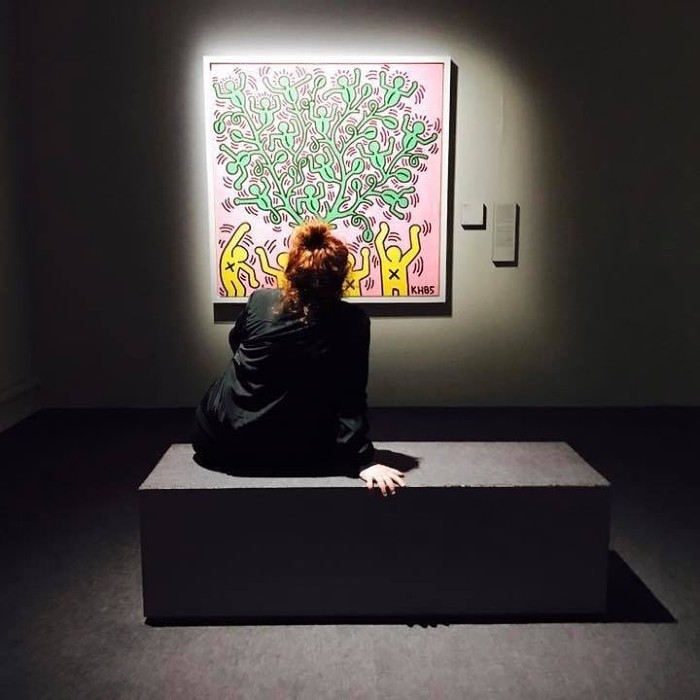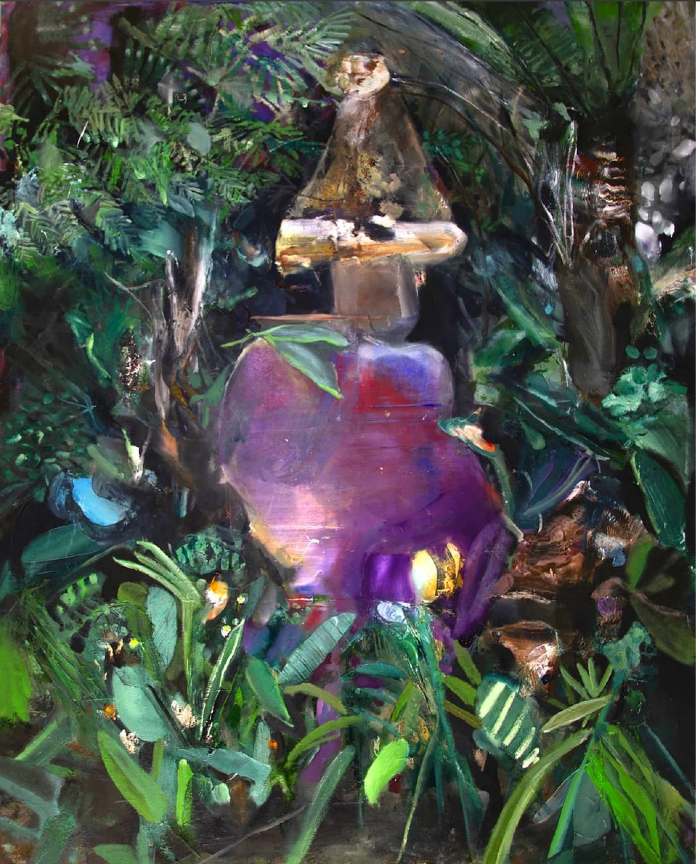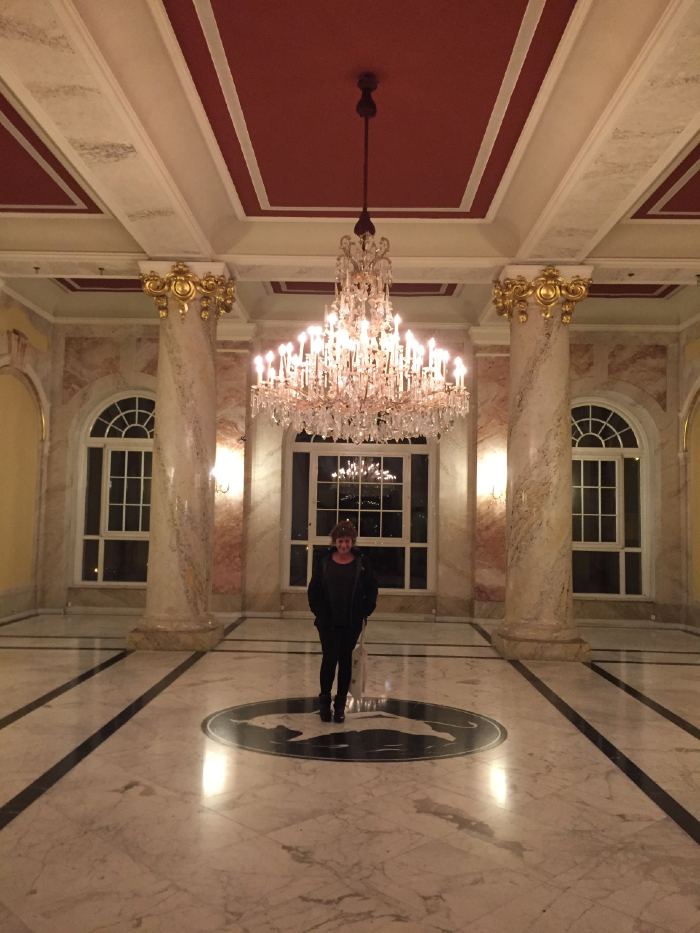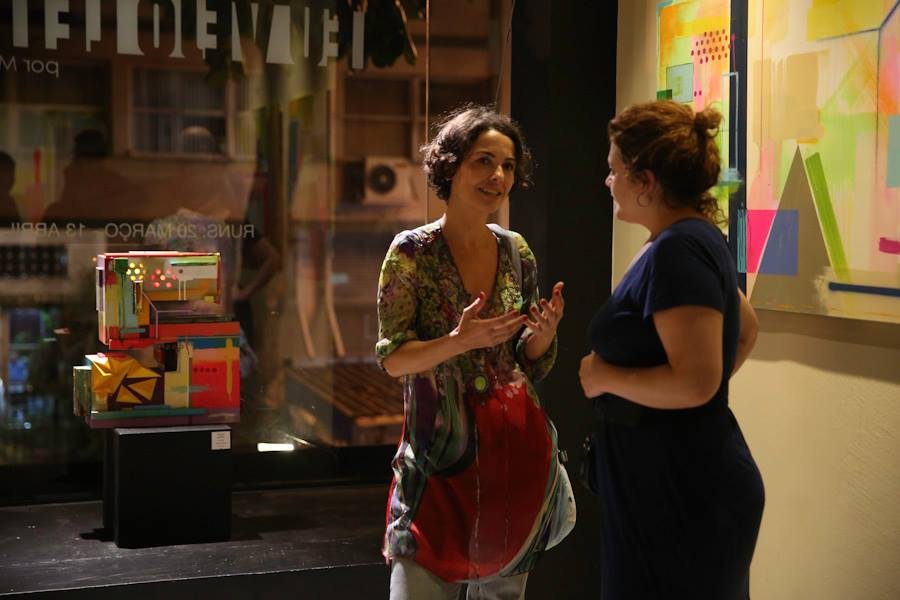Esther Harrison, founder Coeur & Art, talks about her journey in an interview with Anjali Singh for the Asian Curator
Esther Harrison — founder of the online art magazine Coeur & Art — believes in the transformational power of art and its ability to be a global agent of change. The Germany-born English art writer, who grew up in a small town surrounded by Bavarian countryside, squatted and raved her way through ’90s Berlin and later spent several long stays on the hills of the favelas in Rio de Janeiro. It was in Brazil that she gained an abiding passion for contemporary Latin American art, as exemplified by the Carioca art scene in Rio. Known for her empowering sense of self-expression honed in years of promotion work in the music industry in the 2000s, she epitomises the unruly aesthetic charm of her chosen hometown Berlin. Having worked for large corporations such as DEAG, a leading provider of live entertainment in Europe, and later as Chief Editor of the online art magazine ARTBerlin, she is a natural communicator. Today she focuses on creating an authentic environment for artists and readers in her tri-lingual online art magazine Coeur & Art, which champions transformative contemporary art across three key areas; activism, spirituality and technology. Esther is currently also working on a book about the transformational power of art and leaving one’s comfort zone by wielding the tools of art and activism.

What inspires you? Let’s talk about your frameworks, references, and process. (vision, ethos, values)
I am inspired by microcosm social scenarios, such as the favelas in Zona Sul in Rio de Janeiro or the famous mountain spa village Bad Gastein in the Austrian Alps. The two couldn´t be more different concerning landscape, culture, history and inhabitants, yet both run by their own rules, meaning you have to immerse yourself and really dive into the local ways and let go of your own if you are to survive and thrive. You have to adjust to the closed system and leave your comfort zone, mentally and physically. Both Bad Gastein and Pavão Pavãozinho*can easily become claustrophobic and challenging at times, but they also have unique attributes that inspire and challenge. These attributes are extreme, meaning these locations cannot be mistaken for any other place in the world. You are forced to think in new ways, to literally think new thoughts, which I find extremely exciting. Leaving one’s comfort zone is always a conscious decision and in my experience it leads to new knowledge, experiences and dreams in terms of goals as well as subconscious insights that enable you to grow mentally, spiritually and as a human being.
When it comes to contemporary art I am inspired by artists and projects fuelled by activism, spirituality and tech. I am also endlessly inspired by nature and by the concept and idea of slowing down through art.
*Cantagalo–Pavão–Pavãozinho is a bairro (neighborhood) and a group of favelas in the South Zone of Rio de Janeiro, Brazil, located between the bairros of Ipanema and Copacabana.
What were your biggest learning and hiccups along the way in your artistic journey?
Getting caught up in the whole international “glamorous” art market/gallery scene/art fair buzz for a few years and trying to keep up with it and play along.
Bad Idea, especially if you are an independent, some would say unconventional character as I am. Don´t get me wrong, through my promotional work in the music industry I am used to patriarchal structured markets and industries. Having worked with big stars and on a very high professional level, I know the drill. But back then I was of course on the corporate side of things. If you have all the logistics and money and power at your back, well… I am not saying it is an easy job, but it sure makes a big difference. But I left this world for good reason and when I became Editor-in-Chief of ARTBerlin, I was extremely motivated and ambitious but at the same I also repeated something I thought I had to in order to be valued and acknowledged for my work, especially as an art autodidact and intuitive writer. I achieved a lot in a few years at ARTBerlin but the most important thing got lost, which was the motivation that fuelled my work.
My love of writing and diving into an artist´s work and mind-set, giving myself time to let my thoughts develop, contemplating and sitting with the art and being really passionate about it. In other words, taking the time an artist and his work deserves. This wasn´t possible anymore at all. I was writing like a machine to keep up and it literally made me ill. I have always said that when the point is reached that writing becomes mere business and just about earning a living, then I am out.
So in 2018 I quit ArtBERLIN, jumped off the carousel, took a break and in the same year founded my own digital art magazine Coeur & Art.
There was one crucial moment in that process that comes to mind, one that helped me see and feel clearly again. This was when I told Stefano Bosis, an artist and friend whom I respect deeply for his work and thinking, about what a businessman gone gallery owner said to me: “No one cares if you publish an interview with an artist in your magazine, it’s nice but it makes no difference”. This statement really shook me to my core. To this Stefano Bosis said, “Well, if he’s talking about the art market money machine and its structures, maybe he’s right that it doesn´t matter, but he is no artist, he has no clue or the slightest understanding how much the publication of such interviews matters to us artists”.
That was a real aha moment and of course, Stefano Bosis was/is right. I had lost track of this because of trying to fit into a system that wasn´t healthy and authentic. Artists see and feel if you really care about their work and that’s what I try to have reflected in my writing.

Tell us about your curatorial philosophy. How does it all come together?
Quite frankly it’s mostly based on my intuition and the fields I am interested in. In general, there has to be a transformational aspect to art. Of course, there is nothing wrong with art just being art and uplifting, but for me personally, art is and has to be intentional or political on some level. I know that’s not the typical curatorial approach but then in my work as an art writer I am not a typical curator. There’s always certain fields I am interested in and read up and research, such as symbolism, female surrealists, the concept and idea of the artist as a medium, as exemplified in the current travelling exhibition “Not without my ghosts” with artists ranging from Georgiana Houghton († 1884) to Suzanne Treiser. I am also interested in using augmented reality as a tool for activism and bringing subversive art into public spaces and places using tech and so on. So I work with several of these threads in parallel and over long periods and it is this that forms my curatorial process within my magazine. It always comes together in a very homogenous way without any rigid planning, which is my way of developing content and working. Going with the flow, so to speak.
What were you working on when the lockdown was announced? And how has this affected your practice and plans?
I was mainly preparing for two artists residencies I had been invited to, and was also working on a project to combine these two.
The first project was the RAW program, a two-month Residency for Artists and Writers hosted by the Fine Art Department at Rhodes University in Makhanda, South Africa, that was meant to take place this summer. The second was the Arctic Circle Residency, an art and science expedition on a sail ship to the High Arctic that would have been this October. To enhance the possibilities of working in these two very different locations, which are both in the periphery and already strongly affected by climate change, I had developed quite an ambitious project called THE AUGMENTED CIRCLE. This was in collaboration with the L.A.-based artist Nancy Baker Cahill, a pioneer at the intersection of fine art, emergent media, and activism, and the Berlin-based association Next Learning e.V., which seeks to facilitate cross-sectoral transformation processes with innovative learning approaches. All these projects of course are now on hold or have been moved into next year, and in view of the situation we are in worldwide, there is no guarantee that any of them will happen then. One can say that this year has been an object lesson on the illusion of being in control and on the need for patience and letting go.

What would elevate artists’ life during this period? (Networking event, Patron directory, Union, Industry symposium, Buyers conference, Virtual biennale)
More ecological worthwhile financial support and respect by governments and officials towards the art and cultural sector in general and the millions of artists who shape a great deal of how we look at each other and the world around us, who make it bearable. Acknowledgment of the importance of their work for society and wellbeing. Art and culture is not a luxury good, it is a human right.
How do you deal with the conceptual difficulty and uncertainty of creating something completely new with each project?
I don´t. My main concern is authenticity. I really try to find the core essence, to put my finger on it, so to speak. I have to be able to express it in an elevator pitch to a field-foreign person. I always ask myself, why does it matter and to whom? This year, I realised especially that you are sometimes forced to let go, and that’s really hard. But that’s resilience and having the adaptability of water, as Bruce Lee has famously pointed out. To go from a big ambitious project like the AUGMENTED CIRCLE to minor ones. What is the smallest common element that really matters? I want to get down to that and transform and use it in different ways, I want to get down to the nitty-gritty.
For me it was the realization that it is (and always has been) the transformational power of art that excites me, that really makes the difference, and to highlight this not only in the book I’m working on but also in a podcast series, and to do this in a way that is accessible and understandable not only to the art scene but also to people in general. I am not interested in theoretical scholarly pieces. I am interested in the actual impact and tools that artists use when making art to transform their environment and reality. In my experience there is always a right time. Moreover, patience, taking it slowly, is an actual superpower. I am not saying it is easy and this year has been a steep learning curve in many respects but I firmly believe that we are here to expand and transcend and that these extreme experiences are helping us to leave behind the pieces that don´t really matter.

What are you looking for while (re) viewing art for your collection?
When I started modestly buying art, I was mainly looking for certain meanings in the works, something that would resonate within me over time. Of course, I look at the art I purchased early on differently now, but there is not a single piece I regret having bought. My focus has changed insofar that I want work I am interested in buying to mirror my personal belief system, which means for example giving female artists as much support as possible, especially the ones “who are left out” because they have no gallery or means of presentation. It is the reality of capitalism and the world we live to measure the worth of a body of work of an artist through money alone, but I think it´s a very outdated way of valuing art and artists. High on my current wish list are two artists from eastern Germany. I would love to purchase a channelled work by Denise Reichenbach, who lives on a hill in the middle of a wild forest nearby Brisbane, Australia, and a painting by Franziska Güttler, who works and lives in Leipzig. Oh, and one by Lara Wonderland, who lives in my home region of Bavaria.
Which experiences have shaped your own creative process?
My stays in Rio de Janeiro and the contemporary art scene I experienced there in the years between 2013 and 2015, when Dilma Roussef was in power and there was still hope in general for the country, shaped my relationship to art profoundly. A role in this respect was also played by various carioca* artists such as Joana Cesar, Daniel Lannes and Fernando de la Roque. In combination with the insane beauty and roughness of the cidade maravilhosa – Rio de Janeiro – it made me understand and digest art on a completely new level. When I looked at paintings by Daniel Lannes, it was as if I was able to access and feel all the oil paint ever used on a canvas throughout art history, a sensation I will never forget. These encounters in combination with the extreme surroundings infused every cell of my body and created a longing for to feel and explore art that has never left me since.
Future projects: What are you working on now? What should we look forward to?
I am working on a book and an accompanying podcast series about the transformational power of art.
Before you go – you might like to browse our Artist Interviews. Interviews of artists and outliers on how to be an artist. Contemporary artists on the source of their creative inspiration.












Add Comment